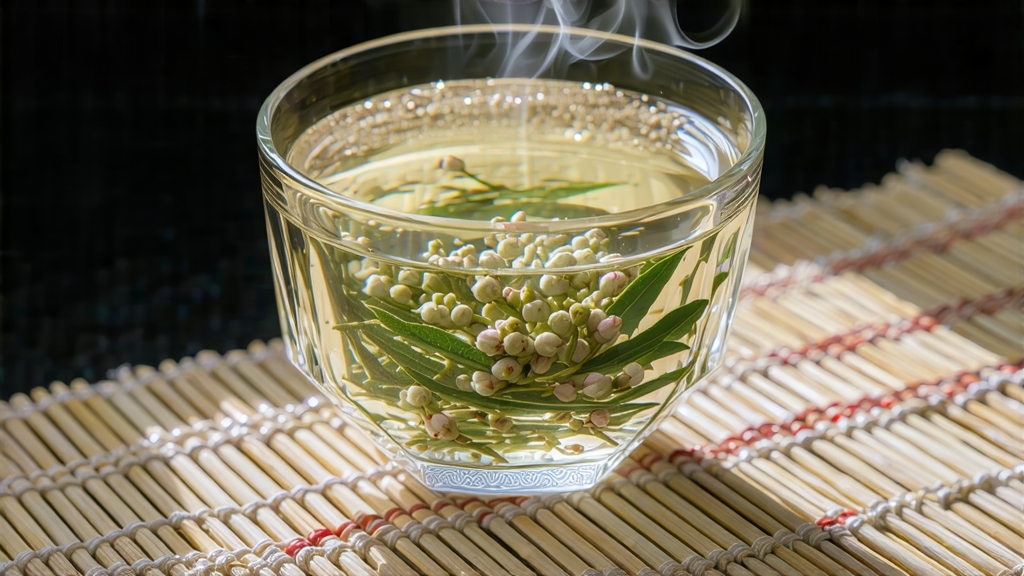
Bai Hao Yin Zhen—literally “White Hair Silver Needle”—is the quiet aristocrat of Chinese tea. While green tea commands the world’s attention and pu-erh fills investment portfolios, Silver Needle drifts like a moonbeam across the tea table, asking only for patience and a clear glass. To understand it is to step into the cool, pine-scented dawns of northern Fujian, where the air is so saturated with fog that tea leaves seem to breathe cloud instead of oxygen.
History: From Imperial Tribute to Global Muse
The first written record of Yin Zhen appears in the Song-era “Treatise on Tea” by Emperor Huizong (1107 CE), who praised “needles of snow, bright as daylight” sent from the Min region. Those early cakes were not the loose buds we know today; they were steamed, pressed, and stamped with the dragon-phoenix seal reserved for the palace. When the Ming Hongwu Emperor banned compressed tribute cakes in 1391, Fujian growers faced a crisis: how to present a loose, unadorned leaf worthy of throne-room scrutiny. The answer came from the wild Da Bai cultivar whose buds swell to an unheard-of 3.5 cm, each sheathed in a down so dense it looks silver under torchlight. By the late Qing, Silver Needle had become the currency of diplomacy—gifted to Russian czars, British botanists, and even the Vatican, whose archives still hold a 1876 invoice for “thirty liang of Fujian white needles.”
Terroir: Why Fuding’s Earth Smells of Seaweed and Iron
The narrow coastal county of Fuding lies at 27° N, the same latitude as the azores and Florida’s citrus belt, yet the East China Sea’s warm current collides with the Wuyi Mountains’ cold air to create a 220-day fog season. The soil is a flaky granite laterite—mineral-rich, absurdly well-drained—so the tea roots plunge three meters in search of water, absorbing trace iron that gives Yin Zhen its subtle metallic finish. Locals insist the sweetest buds appear after a “reverse monsoon”: nights when sea mist rolls inland and morning sun burns it off within twenty minutes, forcing the plant to store amino acids like a camel stores fat.
Varietal Purity: Da Bai vs. Da Hao
International vendors often label any downy white tea as Silver Needle, but Chinese law (GB/T 22291-2017) is ruthless: only the Da Bai (Big White) and Da Hao (Big Down) cultivars picked in Fuding, Zhenghe, or Jianyang counties qualify. Da Bai buds are slender, ivory-colored, with a faint groove along the back like a tiny canoe; Da Hao buds are plumper, more silvery, and carry 30 % more trichomes, yielding a creamier liquor. Purists split the difference—Fuding for fragrance, Zhenghe for body—yet both must pass the “three no’s”: no open leaf, no stem, no purple bruise.
Craft: The Art of Letting Go
Silver Needle is the least handled tea on earth. No pan-firing, no rolling, no kneading—just picking and withering. Yet within that simplicity lies a masterclass in restraint. Buds are pluned at 5:30 a.m. while dew still clings; any later and solar heat starts enzymatic oxidation before the tea reaches the shed. They are laid on bamboo trays exactly one bud deep—never piled—then wheeled into a sunroom whose slatted roof opens and closes like a camera aperture. For 48–60 hours the tea is caressed by alternating currents of mountain and sea air while moisture drops from 75 % to 11 %. The master’s sole tool is a wooden rake used every two hours to flip the buds so gently that no trichome is crushed. When the bud snaps instead of bends, the tea is moved to a charcoal-warm loft for a “soft bake” at 40 °C, just long enough to fix the remaining enzymes without caramelizing sugars. Total human contact: less than three minutes per kilo.
Chemistry: Why It Tastes Like Pear and Petrichor
Silver Needle’s flavor is a moving target, but gas chromatography offers clues. The withering phase oxidizes catechins